[dropcap size=big]T[/dropcap]he layer of baby blue paint on the mid-50s model GMC truck depicted on the mural outside of Highland Park Florist on Ave 58 and Figueroa is still fresh. The tan, 58-year-old painter, Rodolfo Cardona, has years worth of paint splattered all over his red Hustler Casino snapback and he is wearing Wayfarers as he carefully balances on a ladder propped up against the wall to add the finishing touches.
His accidental mullet and full mustache blends in with the rest of the mustached, skinny-jeaned dudes thumbing for records across the street. Except he only speaks Spanish.
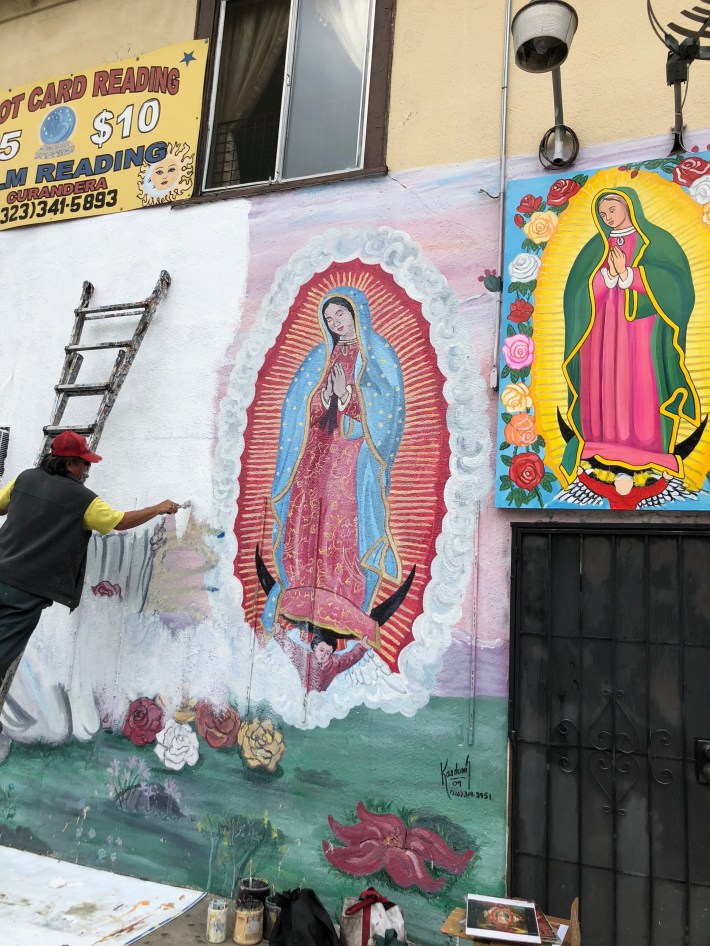
“I update all of my murals every ten years because you have to stay relevant and since Highland Park is all about vintage stuff now, I’m changing my murals to reflect that.”

It’s his fifth day in a row working on the mural and he is almost done. He painted over his old mural of the Virgin Mary apparition in front of the Mexico native who witnessed her next to nopal patch, Juan Diego. Though, he couldn’t bring himself to fully remove her so he painted a smaller homage to her on the upper right corner of the wall instead. “She’ll always have a place,” he says.
RELATED: Personal History: Murals & History in South El Monte/El Monte
On the Figueroa corner of the same building, outside Tropical Fruits and Juices, are pictures of fruits that he painted a decade ago as well. They celebrate symbolism of the tropical life with pineapples, bionicos, palm trees, sliced papayas, and a handwritten menu of the prices. A few avenues down on Ave 54 and Figueroa outside of the Mexican and Central American market, Feli-Mex, are bright, still life paintings of pan dulce fresh out of the oven, a thick chalice stuffed to the brim with a Mexican style shrimp cocktail, and a map of the seven states that make up Central America, including his home country of El Salvador. He painted that store in 2010, but he’s been painting custom art for shops of all backgrounds around Los Angeles for 15 years.
He painted the mural outside the trendy Cafe de Leche on York Boulevard and the facade outside of The Awesome Playground on the other side of Highland Park.
“I never went to school for art, but I think you don’t need school to be an artist — just talent and practice.”
“I’ve been painting since I was ten years old, but then poverty and war started taking a toll on my country, but still I was stubborn and tried to stick it out for as long as I could.” Cardona refused to leave El Salvador at first, so he moved out of his hometown of Sonsonate and found a job doing graphic design for a newspaper in the city as a teenager.
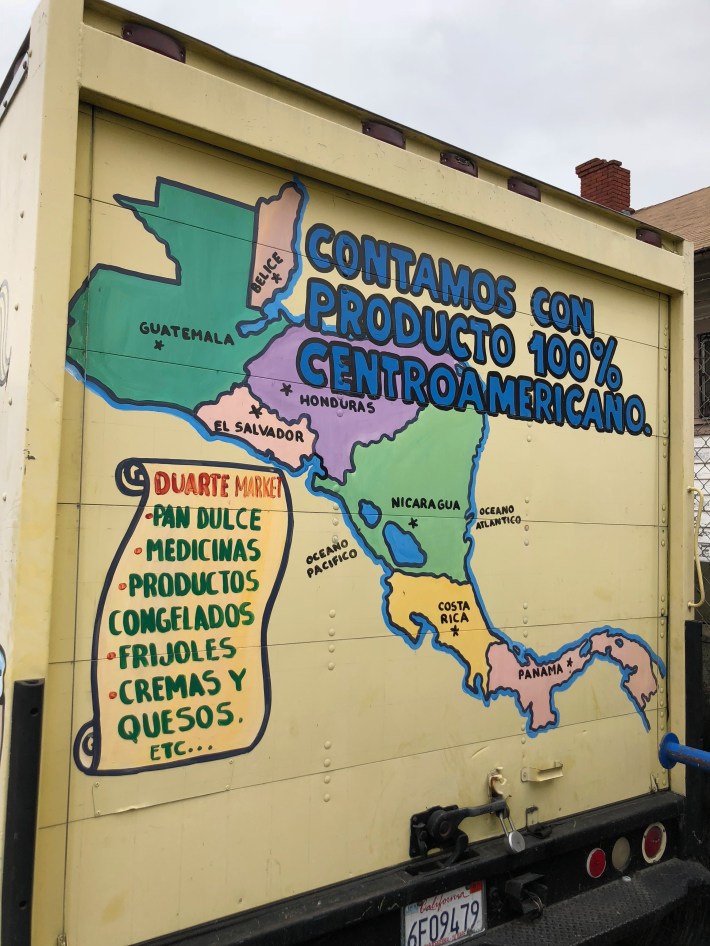
“I never went to school for art, but I think you don’t need school to be an artist — just talent and practice.” He went on to publish two graphic novels in El Salvador before having to move to Los Angeles to escape the violence in 2001. The first one was titled La Peregrina de Los Dolores and the second one was a kid-friendly breakdown of El Salvador’s constitution.
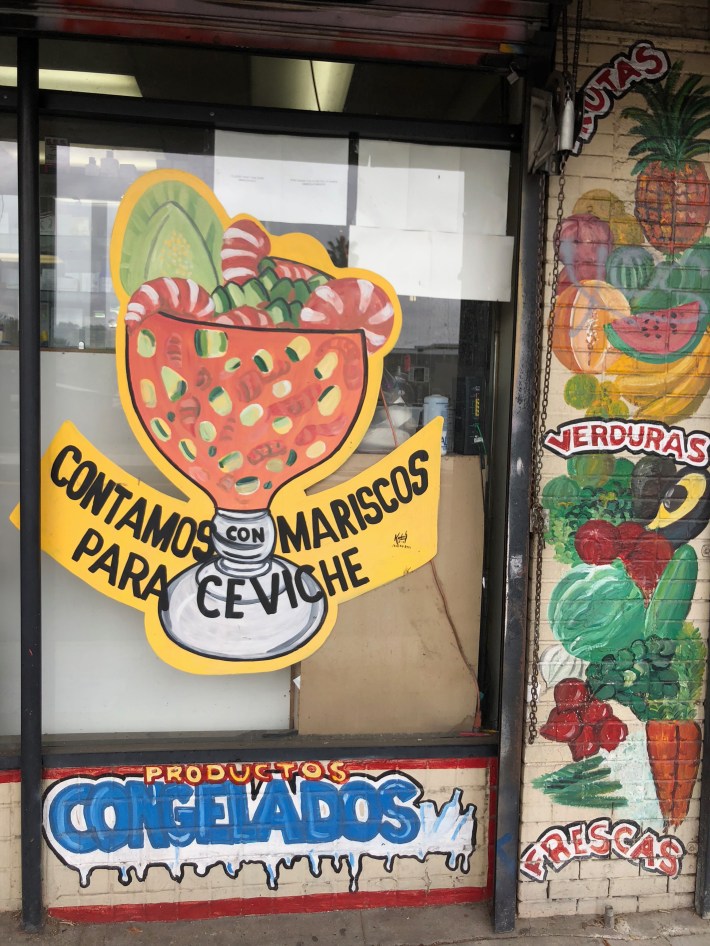
For the first two years living in L.A., he worked as a custodian for a hospital but in the third year, he made that scary leap into freelance artwork and started to promote himself by word of mouth. To this day, he carries his portfolio filled with art he’s done on every corner of the city everywhere he goes. “The secret to getting work as a painter in L.A. is showing up with some quick mockups already, not by showing up and asking, ‘so what do you want?’” As he says this, he pulls out a binder filled with film and digital photos in sheet protectors from his car filled with every color of paint you can imagine and handmade signs he also makes for businesses.
“People in El Salvador always told me, ‘Why do you paint realism if that’s what photos are for?’”
There are 50-foot walls filled with a scene of El Salvador’s coast at Restaurante Rio Lempa in Huntington Park and indoor murals of busty pupuseras — women who make Salvadoran pupusas — handmaking them on top of a woodfire comal griddle. There are other pages filled with smog check shop art full of winding roads, sunny metropolises, and even a 3D mural in front of a tire shop with the top part of the wheel sticking outside the wall. He particularly enjoys making 3D art, he says enthusiastically.
RELATED: Radio Pulgarcito: Exploring Salvadoran Culture and Identity Through Vinyl
The last one in his portable mural collection is one of the United States on a wall with half the country filled with the American flag fluttering in the wind and the other half of the country filled with a fierce-looking bald eagle. He is on top of a water dispensing machine giving the photographer a thumbs up.
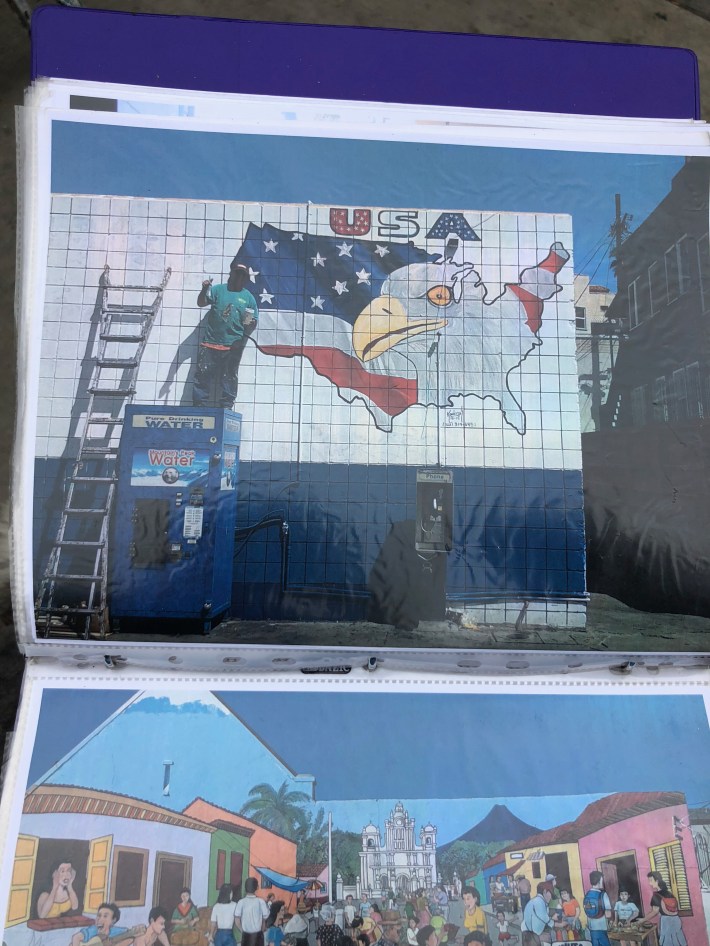
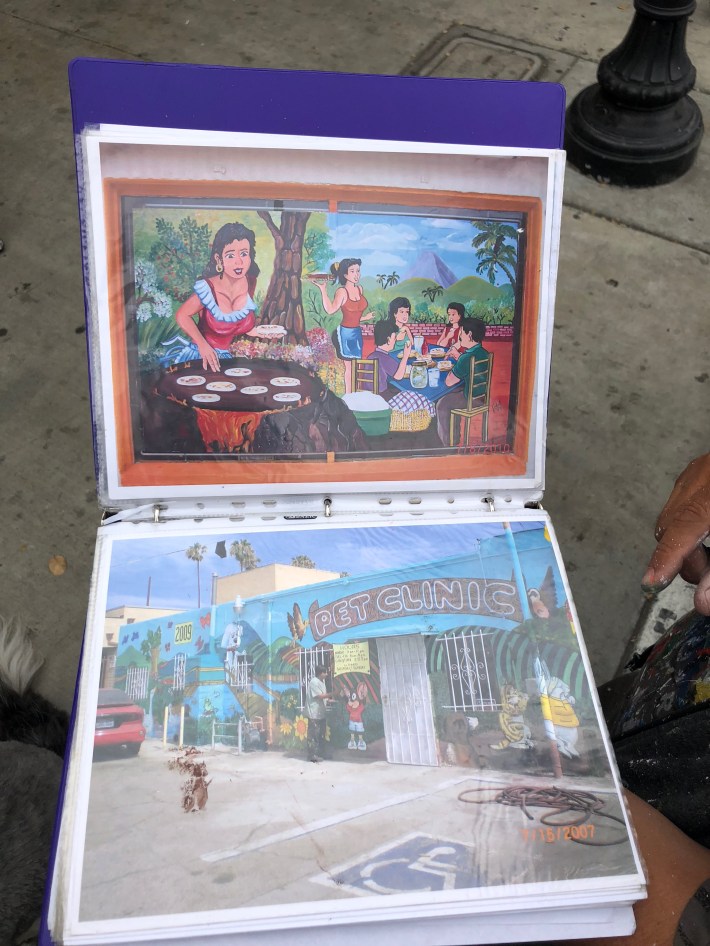
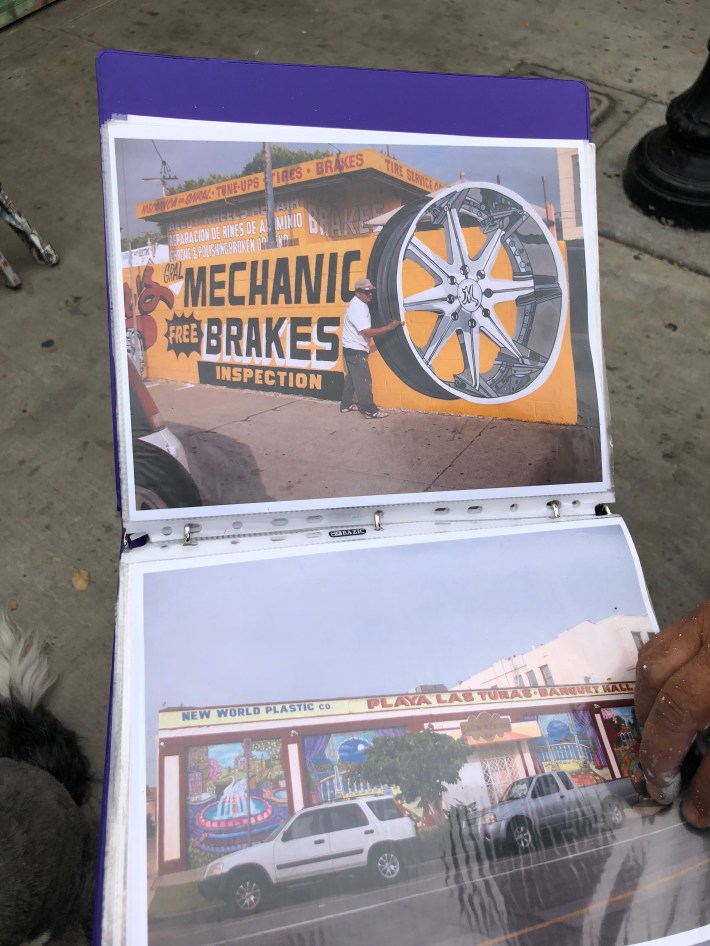
“People in El Salvador always told me, ‘Why do you paint realism if that’s what photos are for?’” He answered to them, “because that’s what pays the bills!” At home, his favorite type of art to enjoy and paint in his off time is surrealism. His favorite artist is Salvador Dalí. He has a wife and three kids, but none took a liking to painting.

While full of life and smiling, he admits that the years are catching up to him and he will soon no longer be able to climb his trusty ladder to paint on walls. But he looks forward to pursuing his other dream that he can do from the comfort of his home desk: to be a graphic novel artist and author.
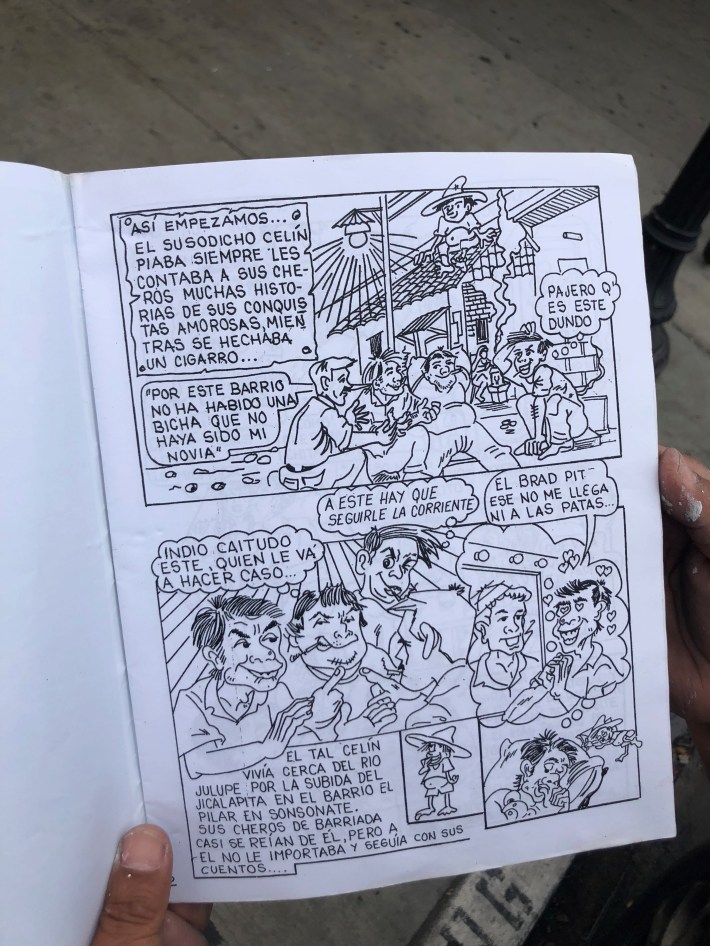
From his car, he pulls out a collection of Salvadoran fables that he has begun titled “El Paquin De La Charada.” Inside it is the Central American wives tale of “El Celin Piaba Y La Siguanaba,” about a shape-changing spirit that typically takes the form of an attractive woman from behind to lure men away, only to have a horse-like face and trick them into danger.
“It’s just my first instalment in the book, but I have so many more to write.”







